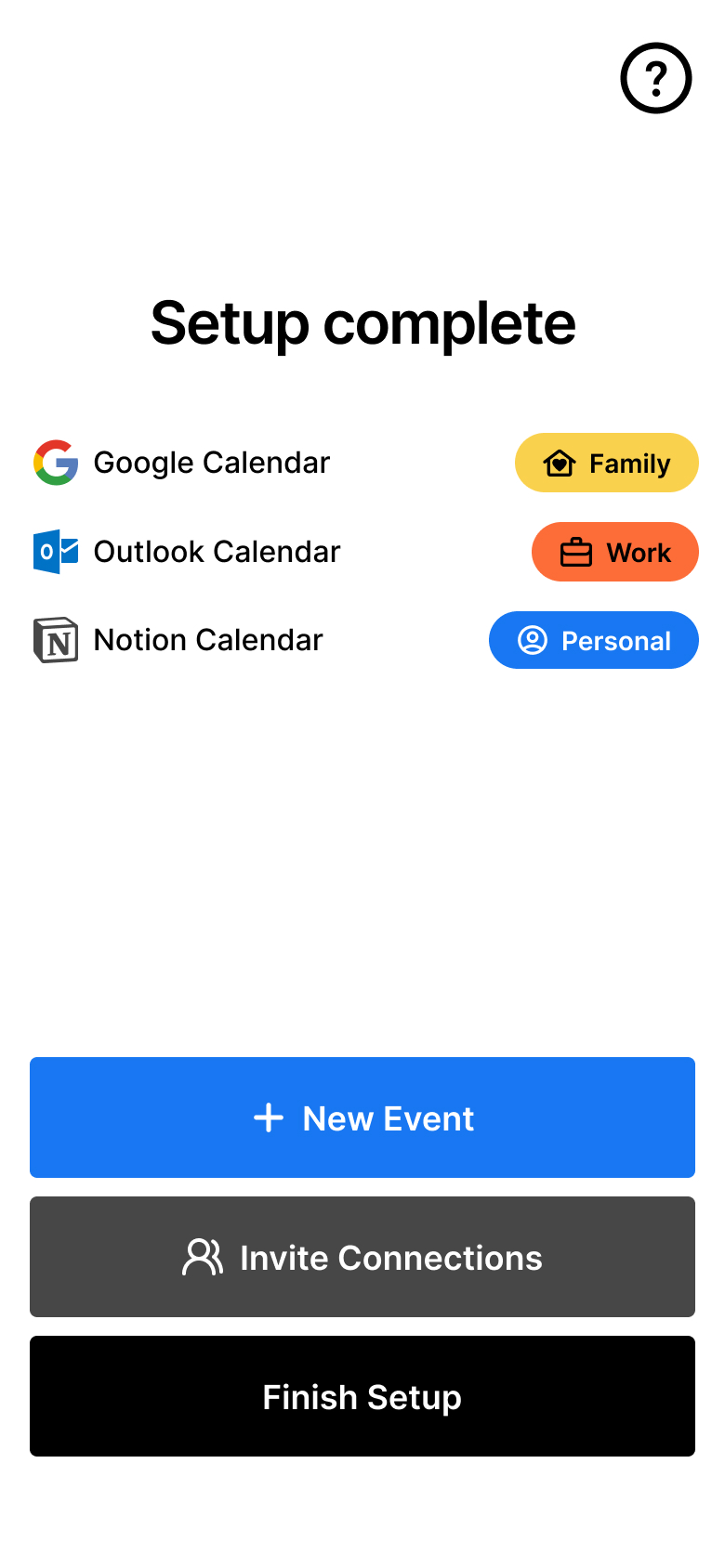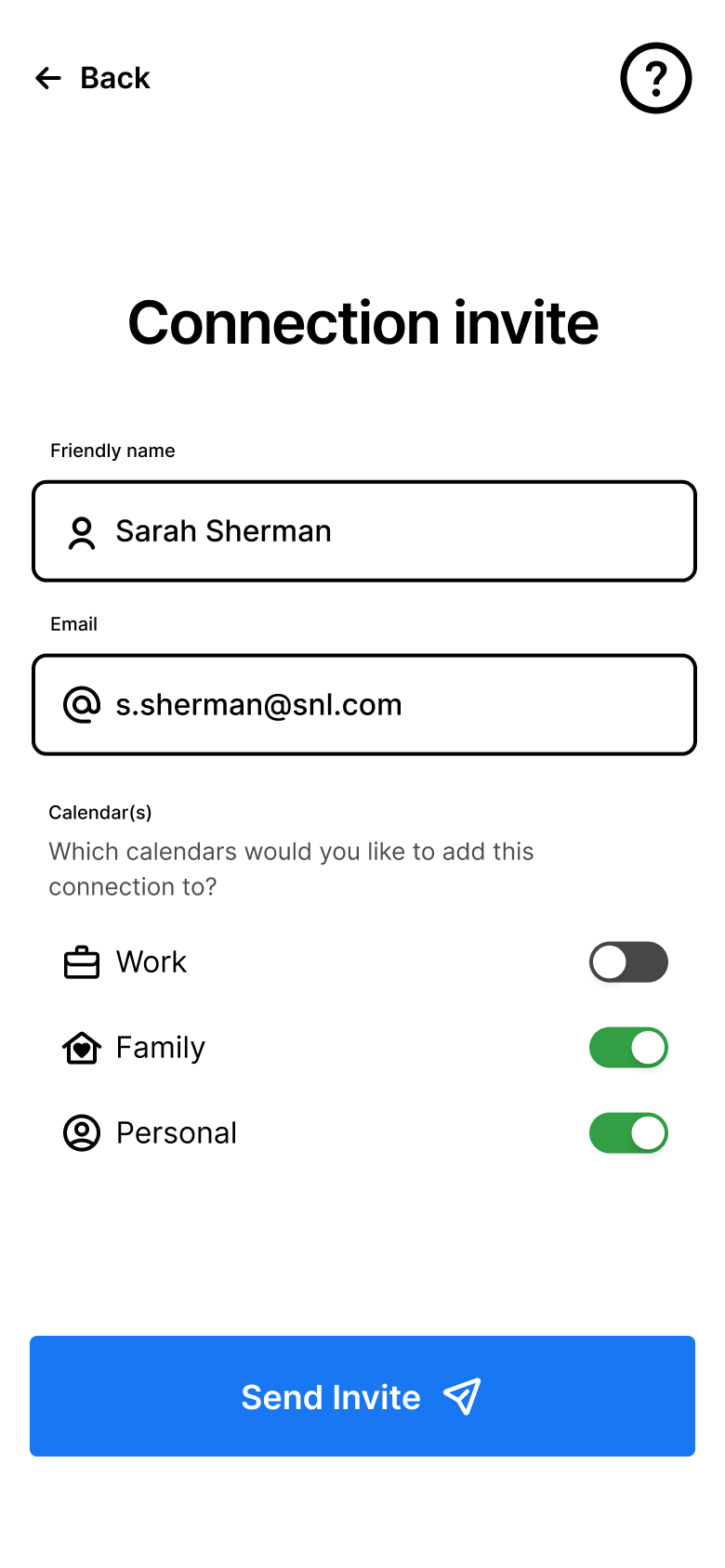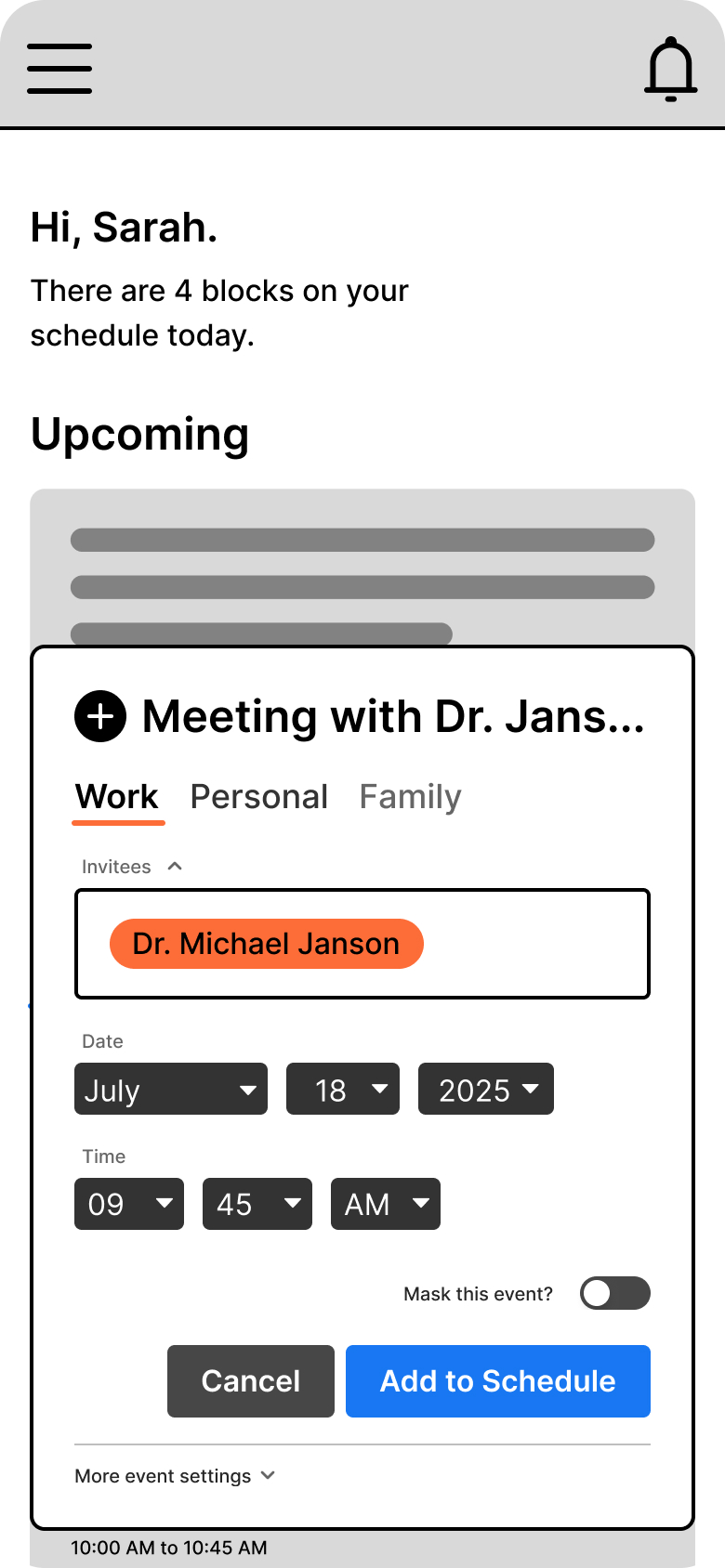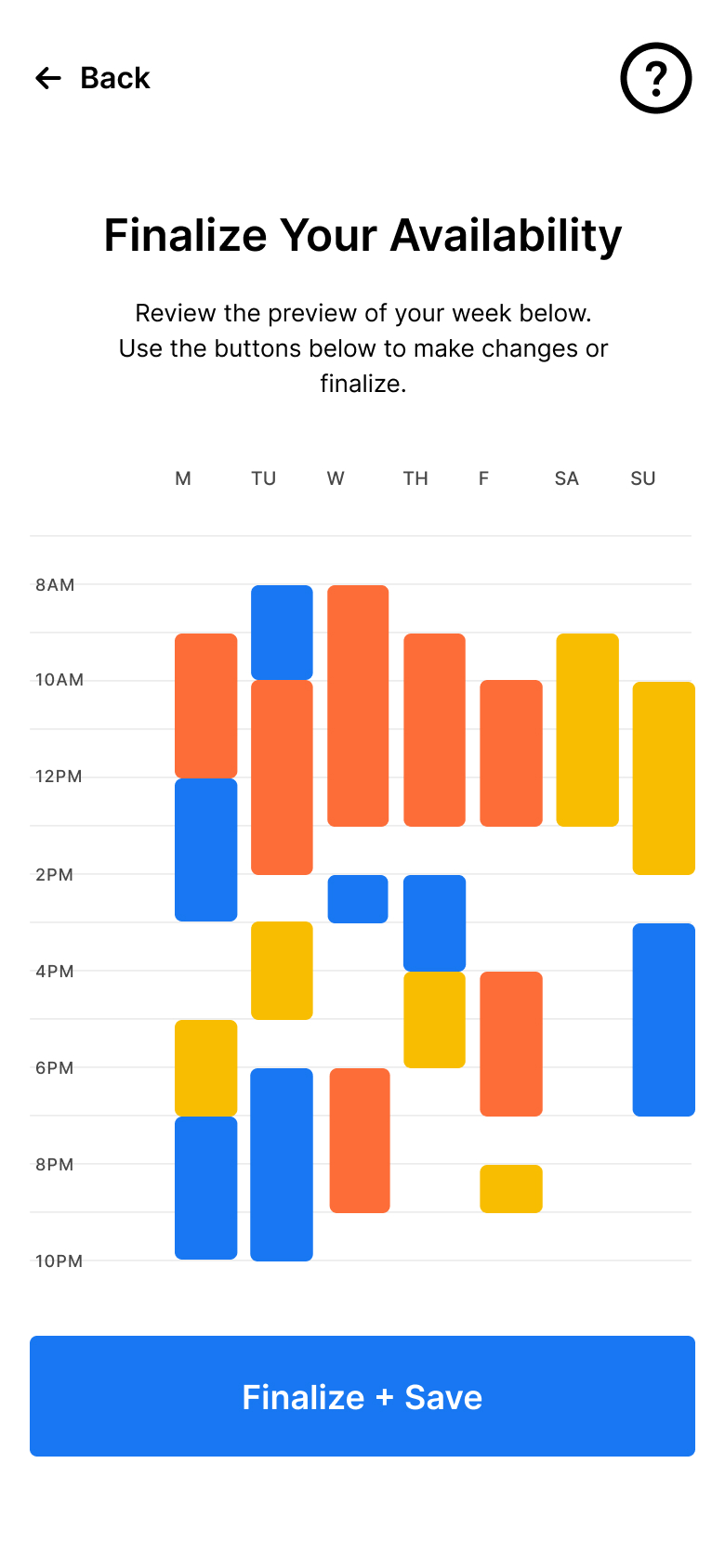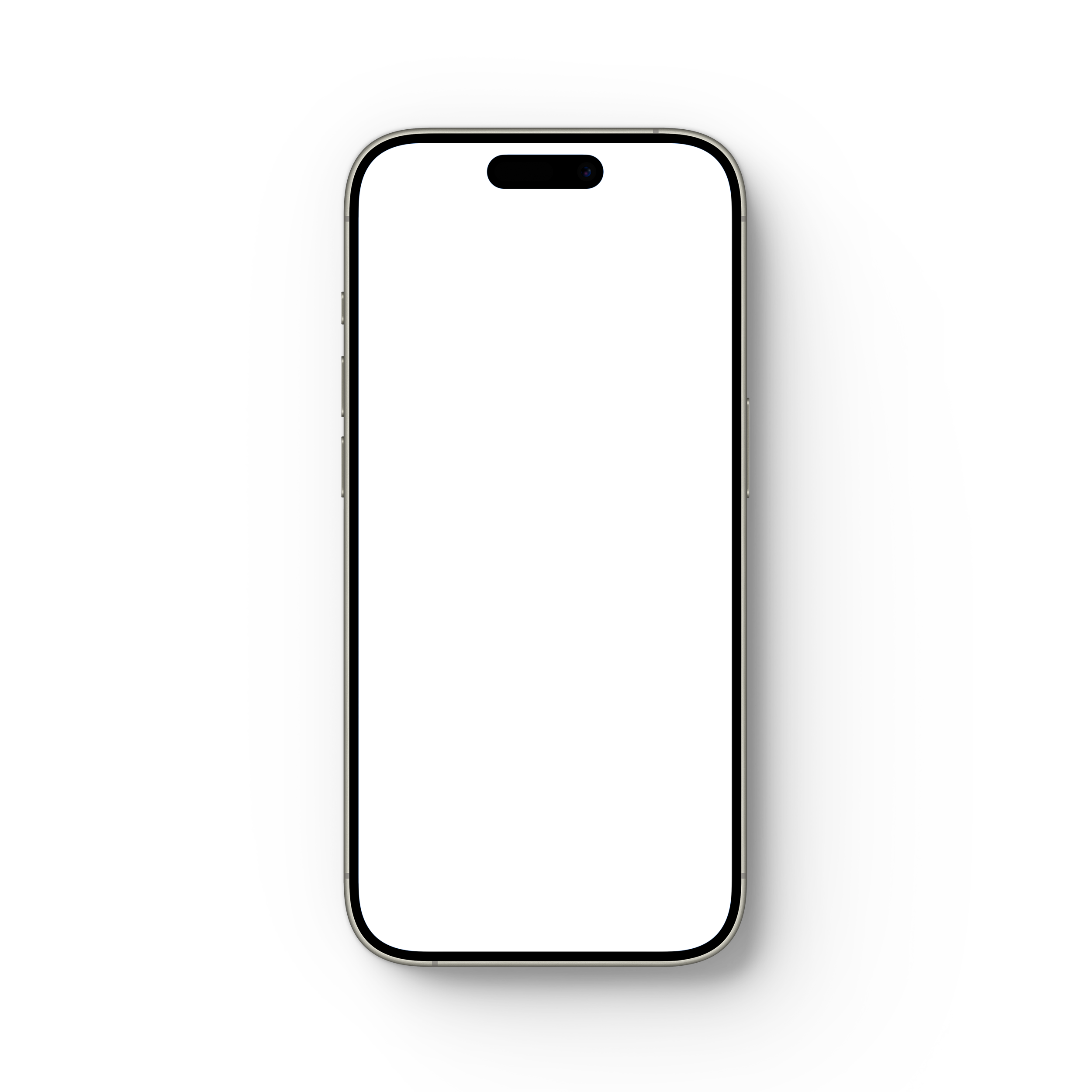
Designing a Unified Calendar & Time-Blocking Tool for Busy Professionals & Freelancers

Bringing Calm & Focus to Complexity
Time is finite—and managing it shouldn’t feel chaotic. Schedually rethinks how time-blocking fits into modern life. By unifying data from multiple calendar sources and simplifying it through accessible design patterns, it gives users an honest picture of their commitments.
The tool’s calm UX, consent-first automation, and adaptive visual hierarchy make focus something you can actually schedule—and protect.
Challenges
- Unifying multiple calendar sources (Google, Outlook, Apple, etc.) without losing integrity
- Preventing event conflicts while respecting privacy and differing access levels
- Enabling intelligent time-blocking that adapts to real-world availability
- Creating automation users can understand, trust, and override
- Designing visual systems that accommodate neurodiverse focus patterns
Solutions
- Developed unified cross-calendar data structure for consistent rendering
- Designed Focus Blocks: predictive, context-aware time-blocking suggestions
- Built consent-first automation flows for merging or adjusting events
- Created adaptive color and motion hierarchy to signal energy, priority, and context
- Applied “calm computing” principles to reduce noise and promote mental clarity
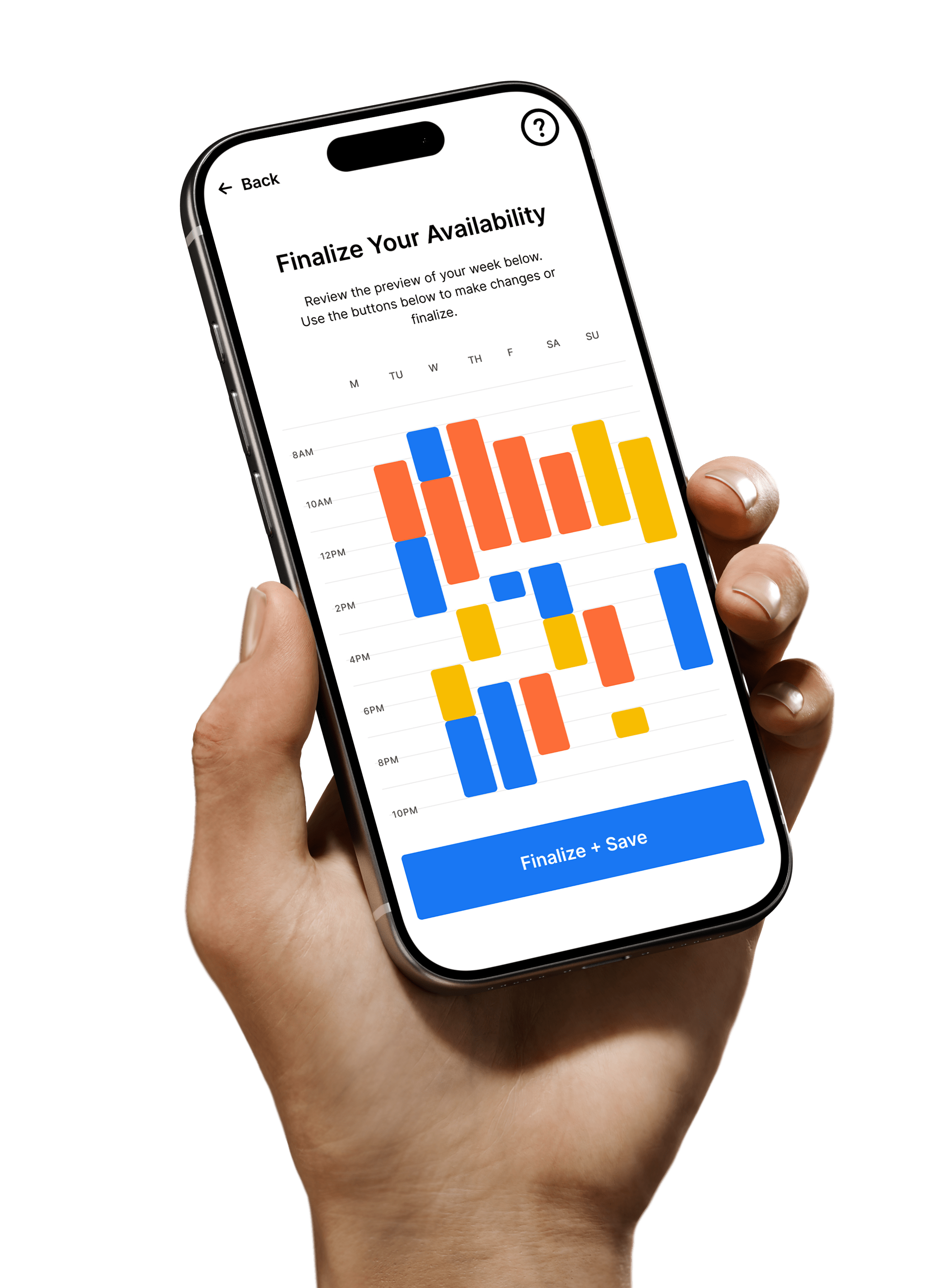
From Insight to Interface
Designing Schedually began with a single question: Why do the very tools built to manage our time often make us feel like we have less of it?
The project unfolded in two phases—first exploring user behavior and psychology around scheduling, then translating those findings into an interaction model that promotes focus and trust.
I studied established productivity tools like Sunsama, Motion, Akiflow, and Cron, noting that while each simplified scheduling mechanics, few addressed the emotional toll of context-switching and alert fatigue. Academic research on time-blocking (via University of Illinois) and cognitive load theory supported my hypothesis: structure increases clarity, but only when paired with autonomy.
Schedually’s process blended behavioral research, UX system modeling, and interface prototyping to build something familiar yet fundamentally calmer—a concept where automation and human intent coexist seamlessly.
- A single app that merges and color-codes different life calendars
- Time-blocking tools that allow her to claim time for herself
- A collaborative family calendar with visibility for all members
- Unified scheduling that merges freelance client calendars
- Tag-based or color-blocked time segments (focus, admin, meetings)
- A way to lock in “no-booking” blocks for uninterrupted work
- Shared calendars with team-level and individual views
- Smart scheduling suggestions based on open slots
- Gentle nudges or automation to encourage calendar hygiene

.jpg)

Discovery & Behavioral Research
I began by studying how professionals like freelancers, managers, and hybrid-team members manage multiple calendar streams—each with its own rules, APIs, and hidden friction. Through contextual interviews and short diary studies, I found consistent themes: alert fatigue, double-booking, and a general mistrust of automation.
These findings mirrored research from interruption science, which shows that knowledge workers switch tasks roughly every three minutes and can take over half an hour to recover focus afterward. I also referenced a Doodle enterprise UX case study that highlighted users’ desire for transparency when automation takes scheduling actions on their behalf.
Synthesizing these insights, I developed a set of design heuristics to guide Schedually’s UX:
- Visibility — Users should always see what the system is doing and why.
- Reversibility — Any automated action should be easy to undo or adjust.
- Focus Protection — The system should help people protect deep-work time, not just fill empty slots.
These principles became the foundation for how I approached the interface and interactions in the next phase.
UX Design & Prototype Validation
With the research in hand, I moved into design and prototyping—building Schedually as a multi-calendar time-blocking tool that could merge calendars, detect conflicts, and proactively carve out space for focused work.
I studied Calendly’s redesign experiments and the Plan.io research on time-blocking, both of which emphasized simplicity and cognitive relief. Inspired by those approaches, I prioritized designing calm feedback loops: interactions that narrate what’s happening rather than silently shifting a user’s schedule.
The prototypes introduced:
- Focus Blocks, predictive suggestions that guard against over-commitment.
- Consent-first automation, where the system explains a recommendation before acting.
- Adaptive hierarchies, using color and rhythm to make complex timelines readable for neurodiverse users.
In usability simulations, participants completed scheduling flows 30% faster and reported higher confidence in their ability to manage time across multiple calendars. Those results validated my initial hypothesis—that when people trust their tools, they regain both clarity and calm.
Schedually ultimately became a design framework for what I now call trust-based automation—a reminder that great UX doesn’t just save time; it gives people their time back.
Testing Calm in Practice
After refining the prototypes, I wanted to see if Schedually actually delivered on its promise: could a unified time-blocking tool reduce cognitive overload and help users feel more in control of their day?
I conducted usability sessions where participants managed multiple calendars, blocked focus time, and tested automation features in simulated real-world conditions. These sessions gave me measurable insight into how well the design balanced structure with autonomy.
Conclusion
While Schedually remains a concept project, the design outcomes point toward significant real-world impact:
- A more intuitive way to manage multi-calendar chaos
- Clearer event categorization and conflict resolution
- Streamlined collaboration for families, freelancers, and teams
Beyond concept validation, the process demonstrated my ability to:
- Translate qualitative insights into actionable features
- Design clean, scalable UI systems for multi-platform use
- Deliver a polished, portfolio-ready prototype that mirrors real-world app complexity
.jpg)
